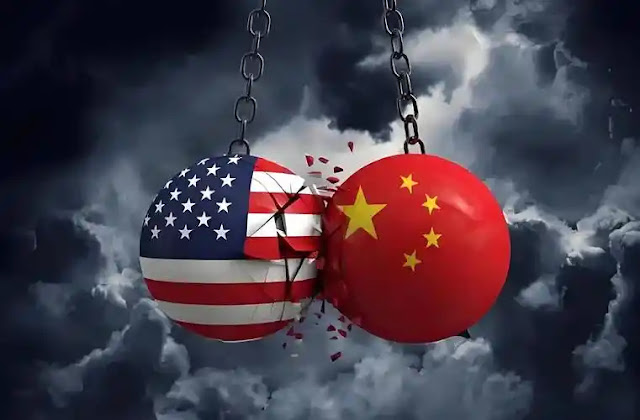The US-China tariff trade
war is like a battle between a madman and a fool: the madman strikes
recklessly, the fool blindly endures without understanding, and the result is
mutual destruction. Victory depends on who falls first, with neither side
holding any real advantage—just a test of who can stubbornly hold out longer.
Global manufacturing
shifts have been US policy since World War II, spanning over 70 years.
Manufacturing moved from the US to Japan, then to the Asian Tigers, and later
to China. The US itself set this in motion, creating China’s manufacturing
dominance. Now, a sudden shift toward conservatism, hoping to force
manufacturing back through political means, isn’t impossible. But objectively,
the US lacks the conditions to reshape industry—whether in labor, technology,
costs, scale, logistics, resources, supply chains, raw materials, or
infrastructure. Since WWII, the US has gradually stopped producing goods,
onlyyou only produces dollars. The stability of the dollar is the foundation of
US global dominance. Producing dollars is the most cost-effective industry,
irreplaceable by any other. Rebuilding a manufacturing platform would take
decades, and any attempt to change the status quo will fail, even with a
“crazy” president in charge.
China is a politics-first
nation. To maintain the ruling party’s grip, no cost is too high—even reverting
to Mao-era isolation or adopting a North Korean model is acceptable. Losing
power means liquidation and death, so when core interests are at stake, China
will fight to the end without compromise, regardless of tariff pressures or
costs. Even losing a third of exports pales compared to the post-Cultural
Revolution economic collapse. China has prepared for escalated trade wars for
years; the three-year nationwide lockdown was a rehearsal for wartime
conditions. At worst, a trade war means another lockdown or a return to
Cultural Revolution economics.
China also has extreme
options: restarting pandemic measures, orchestrating precise assassinations,
devaluing the yuan massively, renegotiating currency swap agreements, scrapping
import tariffs, launching military action against Taiwan, supporting North
Korea’s attack on South Korea, targeting US bases in Okinawa, or sponsoring
terror attacks in the Middle East, Central Asia, or South America. These have
occurred recently, albeit less intensely, with the same major power and
manipulator behind them. Historically, tariff wars escalate into hot wars, and
Trump’s four-year term can’t handle a third world war. He’s a failed
businessman and Soviet spy, launching a global trade war to distract from
Russia’s war-mongering and enrich the Trump family. Tariff policy flip-flops
are just financial manipulation for profit and to satisfy the dark forces
behind him.
The question is whether
China can outlast. Fighting to the end at all costs makes defeat unlikely.
Though Trump paused trade actions against others, targeting only China, he’ll
move to other nations once China’s “solved.” By openly aiding Russia and undermining
NATO, Trump has lost Europe’s trust. If other nations must abandon trade
surpluses and return profits to the US, what’s the point of trade? The US
becomes the pariah, while China, fighting to the end, oddly emerges as the
defender of global trade.

沒有留言:
張貼留言